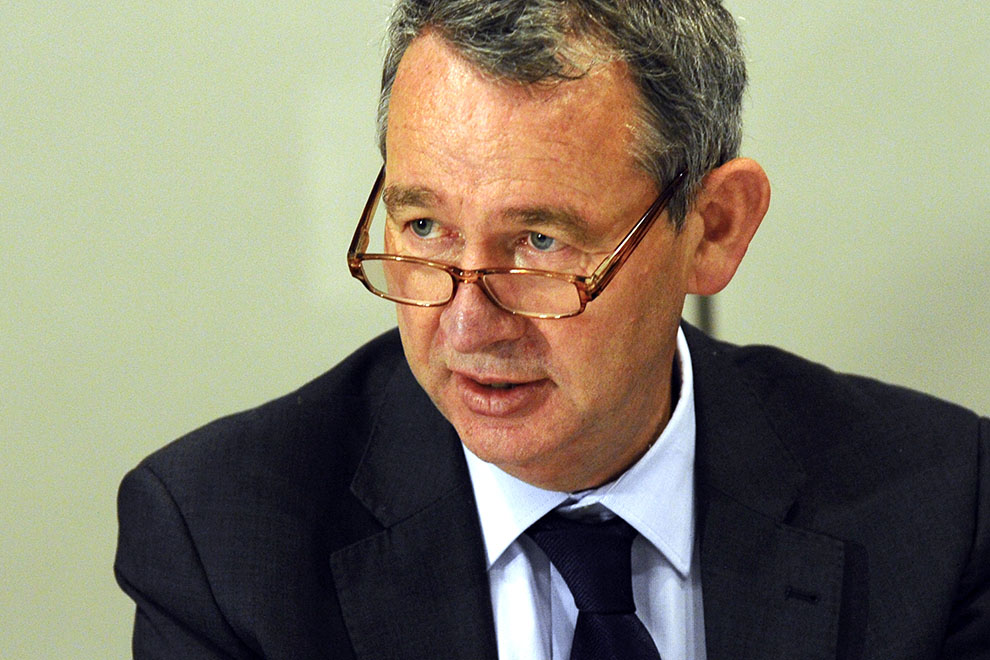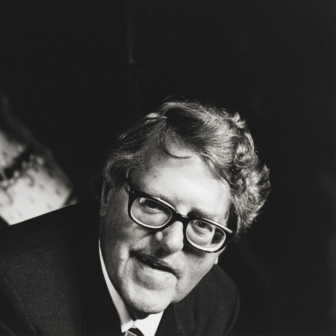For the first time, the decades-old university monopoly of teacher education is threatened, not by other look-alike higher education providers but by fundamentally different ways of doing the job. The federal government’s just-released report on teacher education, Action Now: Classroom Ready Teachers, may have the effect, and perhaps has the intention, of saving the universities from themselves, and keeping intruders at bay.
The report is exceptionally clear and cogent, and mercifully succinct, thanks in part to its narrowed gaze. It proposes that the best current model of university-based teacher education – and it is a very good one – be installed across the system, with those providers who can’t or won’t “shape up” (as the review’s chair, Professor Greg Craven put it) being required to “ship out.”
In not considering a different strategy, strong on exit standards but encouraging of different ways of reaching them, the reviewers have missed an opportunity. Alternative approaches are not quite excluded from the report, but the two most radical and promising of them, Britain’s “school-led” programs, and Teach for America (and its Australian franchise), are not even mentioned. The review has not comprehended what technology can do, in schools or in teacher education, let alone what it will soon be able to do.
At a time when extra funding is hard or impossible to find, the advisory group has recommended an expensive model of pre-service and early-service education and development without saying how the money should be found. It has not considered whether existing resources could be reallocated to its priorities.
Whatever the merits or otherwise of the proposed scheme, it is a nice irony that a government that likes to represent itself as supporting the market and its power to disrupt entrenched interests has endorsed what many of its supporters might regard as government-backed and regulated provider capture.
Over the decades in which the universities have had the field to themselves they have built an empire, and treated the inhabitants as empires do. Just about every university offers teacher education; for some it is core business. Together, they enrol most of Australia’s 80,000 teacher education students and offer most of its 460-odd courses. Some of these programs are very good, some very bad, most in between, a fact that the reviewers’ necessary circumspection barely conceals. It found “a high degree of variability in the quality of practice” with “significant pockets of objectively poor practice.” It concluded that “the standard across all initial teacher education programs must be lifted.” (Emphasis in the original.)
The evidence on which these judgements rest (reported in more detail previously in Inside Story) tells a plainer story. One survey found that three-quarters of new teachers declined to say that they felt “very well” or even “well” prepared for “the reality of teaching.” Another found that between 20 and 40 per cent felt unprepared in a number of areas of practice. Yet more surveys have found over and again that new teachers complain about the weak links between theory and practice in their pre-service courses, the lack of relevance of much of the “theory,” and poor or no liaison between school and campus. Principals agree with them. Asked much the same questions, they give new teachers even lower ratings than the new teachers give themselves. International comparisons are likewise disheartening.
Action Now points out that this baleful performance has continued despite dozens of reviews of teacher education at national and at state levels, dating back to the early 1970s. As the report’s title suggests, these reviewers, to their great credit and by contrast with most of their predecessors, have picked the main point and kept it front and centre: teacher education is there to teach people to teach. Although the advisory group has made recommendations on selection procedures, training for maths and literacy specialists in primary schools, and an inane test of trainees’ literacy and numeracy, it is the demonstrated capacity to teach in the typical circumstances of the school – the class, the classroom and the lesson – that dominates the report and its recommendations.
To this end the advisory group wants less time on campus, more in schools; stronger relationships between universities and practicum-providing schools to be formalised in quasi-contracts; the development of a cadre of go-betweens and in-school supervisors and mentors; and training in the theory and practice of a “clinical” and “evidence-based” approach in which teaching is matched to diagnostic assessment, and the effectiveness of that teaching is constantly evaluated. In all but name, this model of teaching and teacher preparation is the two-year MTeach course pioneered with great success and well-deserved acclaim by the Melbourne Graduate School of Education, or MGSE.
The advisory group’s recommendations on how this model would be implemented around the country are just as clearcut. The essential idea is standards plus enforcement. The standards developed over recent years by the Australian Institute for Teaching and School Leadership “provide a strong foundation for quality assurance and improvement to initial teacher education,” the review finds, but “they are not being effectively applied.” There will be standards for just about everything: entry to programs and exit from them; accreditation of those programs; school–university partnerships; and beginning teacher induction. Adjectives – “rigorous,” “evidence-based,” “transparent,” “world-class,” and so on – are liberally applied. The institute, hitherto responsible for the development of standards, would be charged with enforcing them as well.
There are plenty of reasons to wonder whether things would happen in such an orderly, comprehensive way. Scaling-up a good program sounds like a surefire approach to reform, but it depends on the model of scaling-up being as well thought out and tested as the model itself. Leaving to one side the fact that implementation depends on a politically wounded and unpopular minister to enlist the support of the universities and employers of teachers (state and territory governments, that is), there is the problem of driving substantial change through teacher education itself. At least two kinds of reality have been underestimated.
First, the report implies that the problem with universities is attitudinal and cultural, but that passes too lightly over both the goodwill and educational idealism of many teacher education academics, and the power of the structures, incentives and sanctions within which they work. Many teacher educators were teachers before they moved into academe, but are now physically and mentally far removed from their former world. Research, not teaching, is what defines success or failure, and the most rewarded research hardly equips academics for the kind of role the review proposes for them.
Second is the money problem. Staff deployment and cultural change of the kind required by the proposed relationship between schools and universities is expensive, as the MGSE found when it set up the MTeach. The MGSE estimates that a “clinically based” program costs around $5000 per student per year over and above the cost of a standard campus-based program. Without examining ways of reallocating resources, it appears, the review has concluded that someone will have to pay.
Christopher Pyne has made clear that it won’t be him. “Australian government funding provided to universities for the training of teachers includes the delivery of practical experience,” the government’s response says. “As this is a shared cost between universities and schools, it is important for universities to work collaboratively with school systems and schools to make sure this funding is used to support effective practical experience programs.” It is hard to see either the universities or Pyne’s state counterparts agreeing that the money can be conjured up by “collaboration.”
Presumably one option would be to convert teaching/research positions to teaching-only postings in schools or school liaison. Another is suggested by a quick look at the website of Coursera, the Stanford-based MOOC provider. It has just released “Foundations of Teaching and Learning,” a series of twelve courses concluding with a “capstone project” covering “the professional roles and responsibilities of a teacher… how to become more effective, what research tells us about how students think and behave… how we can apply this understanding in your approach to teaching, and how to design instruction, activities and assessments around learning goals, and defining teacher and student success.” All that is free, and available to anyone anywhere in the world who has a computer and broadband. Certification is an optional extra – a total of US$281 for the twelve modules plus the capstone project.
MOOCs are not The Answer, but they do suggest where part of an answer could be found. Rather than have the same course developed dozens of times over, why not offer three or four online versions of it from which providers (and students) could choose, and choose whether to offer it hands-free or as part of a blended learning program? Possibilities of this kind are not entertained by the advisory group. It views technology as a supplement to the usual business rather than a substitute for some of it.
Nor does the report alert its readers to particularly promising alternatives to the MTeach model. It does make passing reference to “employment-based programs,” but doesn’t examine radical alternatives developed in Britain and the United States. In Britain, groups of schools have combined to offer apparently very successful workplace-based teacher preparation. A recent report from the UK Office for Standards in Education, Children’s Services and Skills found that of twenty-one teacher education programs reviewed within a toughened-up framework, only five were “outstanding for the overall effectiveness of training and outcomes for trainees.” All five were “small employment-based partnerships with schools centrally involved.” None were university-based.
In the United States an even more radical departure, Teach for America, or TFA, takes bright young graduates from just about any field of study through an intensive up-front induction program then places them in disadvantaged schools where they take on closely supervised teaching responsibilities from day one. By combining work and further study TFA “associates” can earn a graduate teaching qualification. A Teach for Australia program was established in 2010, and has an impressive brag sheet, including strong feedback from principals, 100 per cent of associates placed in disadvantaged schools, 40 per cent of them in non-metro areas and the same proportion maths and science specialists, a 50:50 gender split, very high demand for entry (only 6 per cent of applications accepted), and an impressive average ATAR of 95. An evaluation by the Australian Council for Educational Research found that costs were high but effectiveness might be as well. “The perception schools have of Associates is very positive,” it concluded, “and, thus far [2013] every school that has participated in the program would like to continue that association.”
Within Teach for Australia is concealed the really big question: if the standards developed by the Australian Institute for Teaching and School Leadership are as good as the review advisory group says they are (and they do seem to be), then why have courses of fixed length? The advisory group endorses both muscular standards and the requirement that the great majority of teacher education students must complete four years or more of study in an approved higher education course.
If people come into teacher education with very different kinds and amounts of experience and knowledge (and they do), and if they learn at very different rates (as is particularly the case in learning to teach), and if you are confident that careful assessments made against well-designed standards will be able to tell when they’ve got it – then why make them start at the same point, proceed at the same rate, and keep going for the same period? Why, for that matter, insist that they do so via that nineteenth-century creature, “the course”?
The question could be asked of any higher education program – engineering, philosophy, food science, medicine, whatever – but it is a particularly awkward one for teacher education. An unusually high proportion of the knowledge required by teaching – not the whole, by any means, but a relatively large fraction – is in the form of embodied capacities, easily recognised, hard to define, deployed in a rapid, reflex, intuitive way, and to do with complicated elements of personality, bearing, ways of interacting with others, emotional capabilities and needs. For that reason, some people get it very quickly while others never do, no matter how hard they try or how much help they are given.
All this suggests that the process of becoming a teacher can be organised and conducted in ways very different from the familiar. Just how it could and should be done is a question for professional judgement, personal preference and logistics. The overall framework should be, in my view, of the kind captured in the old idea of an “apprenticeship” or the newer notion of “career and training paths.” That is, programs, standards and assessments linked to different kinds and levels of responsibility in the school, from roustabout to tutoring to teaching assistant to beginning teacher to managing teacher.
Gains in educational quality might come with other benefits. Prospective entrants to the profession might see whether schools really are for them before wasting too much of their own and other people’s time. They could earn at least a modest living right from the start. That in turn could do a lot more for the “quality” of entrants than the kind of fiddling with selection processes proposed by the advisory group. Workplace-based programs could do much for the intellectual, professional and educational life of schools. If universities can be given the right incentives to participate, workplace-based programs could also see more research of the R&D kind and less of the currently dominant scientistic scholasticism.
The universities may well feel themselves to be the Advisory Group’s (and the Australian Institute for Teaching and School Leadership’s) whipping boys, and with some justice. Yet despite a long history of doing a very ordinary job and of sustained resistance to reform, the universities as a category have emerged with their budgets, research practices, staff deployments and control of qualifications – in short, their power – largely intact, and with their rivals, actual and potential, sidelined. No doubt that outcome owes something to the direct exercise of that power (chair of the advisory group and half of its membership) and to the control of what is talked about in what terms. In this case the universities are indebted to the particular world view that gave the report its focus, clarity and cogency.
Just about every element of the review’s analysis and recommendations depends on the “effectiveness” paradigm. That is where it got the idea that “student outcomes” should be the focus of teaching and therefore of teacher education; that the outcomes that really matter are cognitive, in the basics; that “teaching” comes from the teacher in the form of lessons conducted in the familiar setting of the class and the classroom; that the measure of the “quality” of that teaching is to be found in assessed “student performance”; and that teacher education providers can not only lift the “quality” of teaching but also generate “evidence” that will accurately represent the quality of their own work.
The effectiveness paradigm has been a powerful force for the good in schooling. It developed as a response to the let-a-hundred-flowers-bloom era of the 1960s and 1970s when anything “innovative” was by definition better than something that wasn’t. Effectiveness researchers asked the hard question: which of dozens of approaches and innovations actually works? And it insisted that by “work” we should mean that it does what schools are there to do, which is to help kids learn the fundamentals and to use that learning to learn other things. Against a cacophony of educanto, the effectiveness movement demanded evidence, and focused on the main game.
All this is crucial, and should not be lost. But the effectiveness idea also has some big limitations. One is the notion that the problem and the solution both lie in the skills of the teacher, to the relative neglect of the organisation of the teaching and learning process. Another is the over-emphasis on some kinds and areas of learning, and the lack of interest in the social and emotional welfare of students and teachers. But those are issues for another day. More directly relevant here are two further shortcomings.
First, educational work, like any other, has costs as well as effects. About costs the effectiveness paradigm has nothing to say, and it is therefore a stranger to that most subversive of concepts, opportunity cost. Teacher education in Australia consumes hundreds of millions of dollars a year ($600 million a year from the main funder, the Commonwealth). The advisory group has tried to wring more out of the inherited pattern of spending (then asked for more) rather than ask whether those dollars could be spent in other and better ways.
Second, the underlying question of “what works” is actually “what has worked in the past” to the exclusion of what is emerging and becoming possible. The assumption is that the future of both schools and teacher education will be in all essential features continuous with the past. In this way, in a time of rapid technology-enabled change the effectiveness paradigm becomes, without necessarily intending to, a defence of arrangements and institutions with a poor track record in both performance and reform. Prospective thinking and experimentation should not, of course, displace the lessons hard won by the effectiveness paradigm. Or vice versa. •




